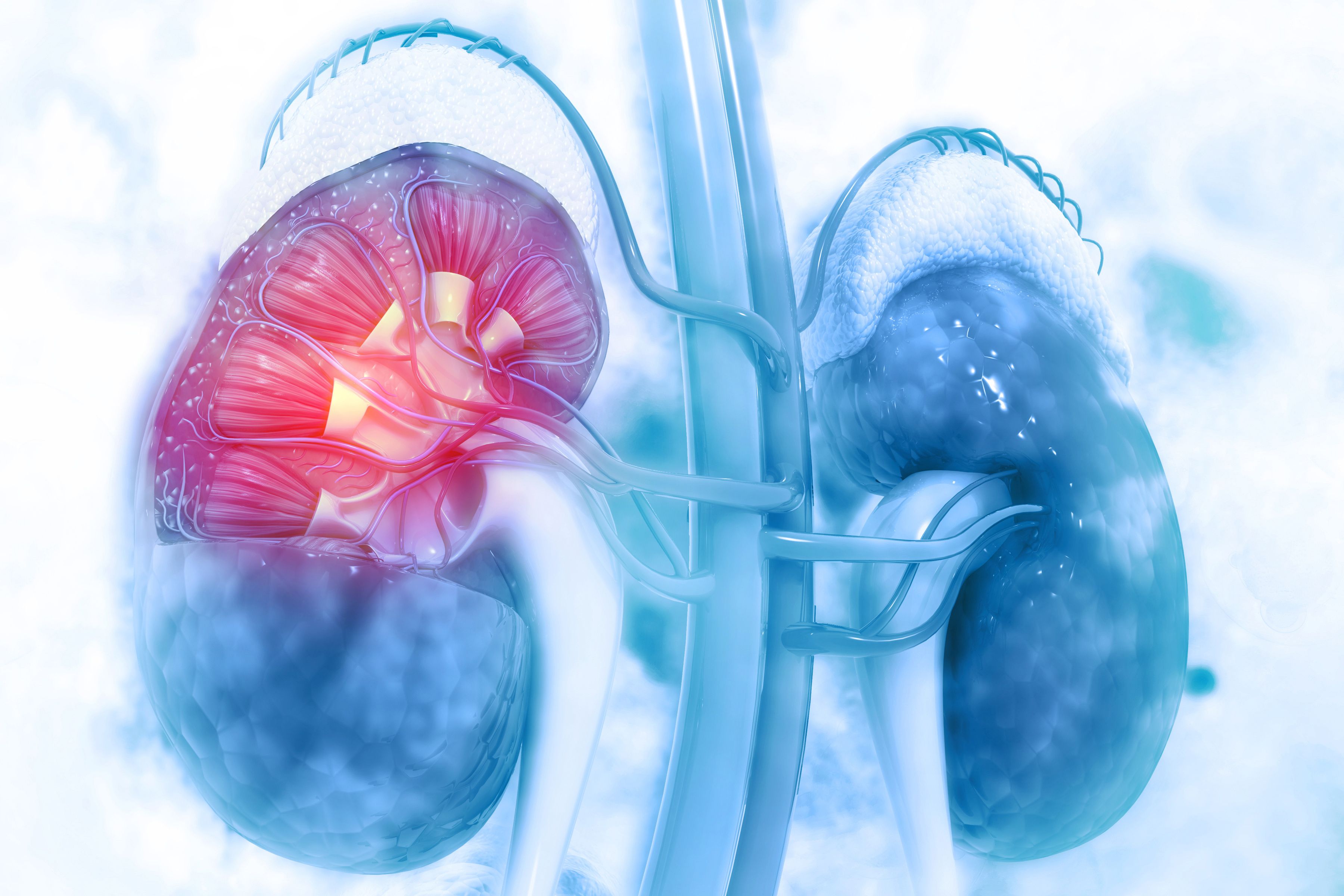- Center on Health Equity & Access
- Clinical
- Health Care Cost
- Health Care Delivery
- Insurance
- Policy
- Technology
- Value-Based Care
Surgery, Radiation for PCa Show Equal Efficacy in Candidates for Renal Transplantation
A recent study suggests that patients with high-risk prostate cancer (PCa) in need of renal transplantation should receive cancer treatment before their transplants, as surgery and radiation treatment for localized PCa appear to be equally effective in this patient population.
According to a study published in BJUI Compass, treatment of localized prostate cancer (PCa) in patients who require renal transplantation should consider the state of PCa progression before transplantation.
Human Kidney | Crystal light - stock.adobe.com

Incidence of PCa in renal transplant recipients (RTRs) has been on the rise. While transplants provide many benefits and improve life expectancies in affected patients, the researchers note that proper management of this patient population is controversial. The literature on this topic lacks data on how cancer screening, various PCa treatments, timing of treatments, and immunosuppression factor into patient outcomes.
To address this gap, researchers conducted a comprehensive analysis investigating all available treatment options for recipients of and candidates for renal transplantation with localized PCa.
Databases such as the Ovid MEDLINE, Ovid Embase, Trip Database, Cochrane Library, and The Transplant Library were utilized to identify studies including patients with localized PCa before and after renal transplantation. Studies both prospective and retrospective, comparative and non-comparative were observed and included interventions such as active surveillance, radiation therapy, surgery, or focal therapies.
Researchers were primarily concerned with overall survival (OS) and PCa-specific survival outcomes at 1- and 3-year end points. Secondary outcomes of importance were graft survival/complications, PCa treatment complications, positive margin rates, and biochemical recurrence rates.
Sixty studies that included 525 patients were identified for the authors’ review. The majority of these focused on PCa outcomes after renal transplantation. Most of the patients were classified as having lower-risk PCa (Gleason score < 8). Any cases of mortality were confined to patients with high-risk PCa (Gleason score 8 or above). Only 7 studies mentioned prostate-specific antigen screening for RTRs before prostate cancer diagnosis, the authors noted.
At 1 year, individuals who had surgery or radiation therapy pre- or post-transplant experienced high OS and PCa-specific survival (100%). At 3 years, PCa-specific survival was comparably high between the two groups (100% in surgery group and 99% in radiation), although OS was higher for those in the surgery group (99% vs 83%).
The surgery group reported complications in 14.5% of cases. These were largely classified as minor; however, some major complications included rectal injuries, postoperative bleeding, abscesses, and others. In 3% of cases, there were renal graft complications, as well as frequent reports of postoperative continence (58% of total surgical patients) and erectile dysfunction (42% of total surgery patients).
About half of individuals in the radiation group reported minor complications such as grade 1 proctitis and cystitis. One patient experienced more severe grade 3 proctitis.
Very few patients underwent active surveillance or focal therapies in the observed studies. No cancer-specific deaths were recorded in these cases, although 5 patients died from non-PCa-related causes.
Some studies also compared radical prostatectomies in RTR vs non-RTR individuals with PCa. Between these groups, no significant differences were observed in surgical, biochemical, or survival outcomes.
The authors encountered many limitations throughout their analyses. They point to how many of the observed studies were poorly conducted, had short follow-up periods, small sample sizes, lacked records on comorbidities, and were deemed at high risk for bias.
Despite these limitations, the authors believe their findings demonstrate the importance of stratifying patients’ risks of renal transplantation according to their cancer’s progression, but that surgery and radiation therapy for localized PCa in RTR and RT candidates produced similarly effective outcomes.
"Given the limitations of this study, there is a trend that low and favorable intermediate-risk prostate cancer patients may proceed to renal transplantation without cancer treatment," the authors concluded. "High-risk prostate cancer should be treated prior to renal transplantation if detected pre-transplant."
Reference
Dat A, Wei G, Knight S, Ranasinghe W. The role of localised prostate cancer treatment in renal transplant patients: a systematic review. BJUI Compass. Published August 9, 2023. doi: 10.1002/bco2.276
